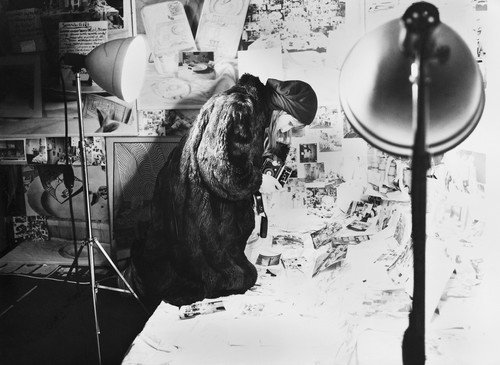Anna Oppermann
dal 16/5/2007 al 11/8/2007
Segnalato da
16/5/2007
Anna Oppermann
Wurttembergischer Kunstverein WKV, Stuttgart
Re-Vision der Ensemblekunst. The first comprehensive solo exhibition worldwide of the German artist. 'Ensembles', her carefully methodical and space-consuming installations, are characteristic of art in the 1970s, and yet they are unique. They make early reference to contemporary artistic practices that link process, action, and statement as well as rely on viewer participation.

Re-Vision der Ensemblekunst
From May 17 to August 12, 2007, the Württembergischer Kunstverein is presenting the first comprehensive solo exhibition worldwide of the German artist Anna Oppermann since her death.
Anna Oppermann’s “ensembles,” her carefully methodical and space-consuming installations, are characteristic of art in the 1970s, and yet they are unique. They make early reference to contemporary artistic practices that link process, action, and statement as well as rely on viewer participation. Although installations have been exhibited in Sydney (1994), New York (1999), and Paris (2004) since the artist’s death in 1993, there has yet to be a comprehensive “Revisions of Ensemble Art.” Curator Ute Vorkoeper has selected seven ensembles produced between 1968 and 1992 that demonstrate Oppermann’s artistic development as well the links within her ensemble art. As was the case in the artist’s lifetime, even after her death the open works were not merely reconstructed, but installed in reinvigorated form.
Anna Oppermann saw the world, human relationships as “ensembles”: as arrangements consisting of perceptions of and reflections on events, norms, stories, emotions, and theories. She observed her own everyday life as well as that of those around her very closely, seeking out objects, images or concepts in which she saw metaphors for its absurdities and areas of conflict. She drew, photographed, painted, and described them in detail, collected texts and quotes, and finally arranged all of the parts as still lifes. She subsequently captured the arrangements from alternating perspectives and in varying constellations and added these new views to the arrangements. In this way, her ensembles successively grew out into the surrounding space.
Anna Oppermann exhibited her ensembles for the first time in the early 1970s in Hamburg and Trier. She soon won international acclaim for her special mixture of concept, process, visual, and spatial art. Oppermann took part in exhibitions such as the documenta 6 and the documenta 8, and in the biennales in Venice and Sydney. The artist, who was born in Eutin and lived in Hamburg until her untimely death in 1993, was awarded numerous renowned prizes and grants. From 1982 to 1990 she was professor at the University of Wuppertal, and beginning in 1990 she taught at what is today the Berlin University of the Arts.
Parallel to and in an open dialogue with the solo exhibition of Anna Oppermann, the Württembergische Kunstverein Stuttgart will be showing Übergangsräume—Potential Spaces. The intended dialogue focuses less on formal aspects of artistic production than on their methodological approaches.
Wurttembergischer Kunstverein
Schlossplatz 2 - Stuttgart



